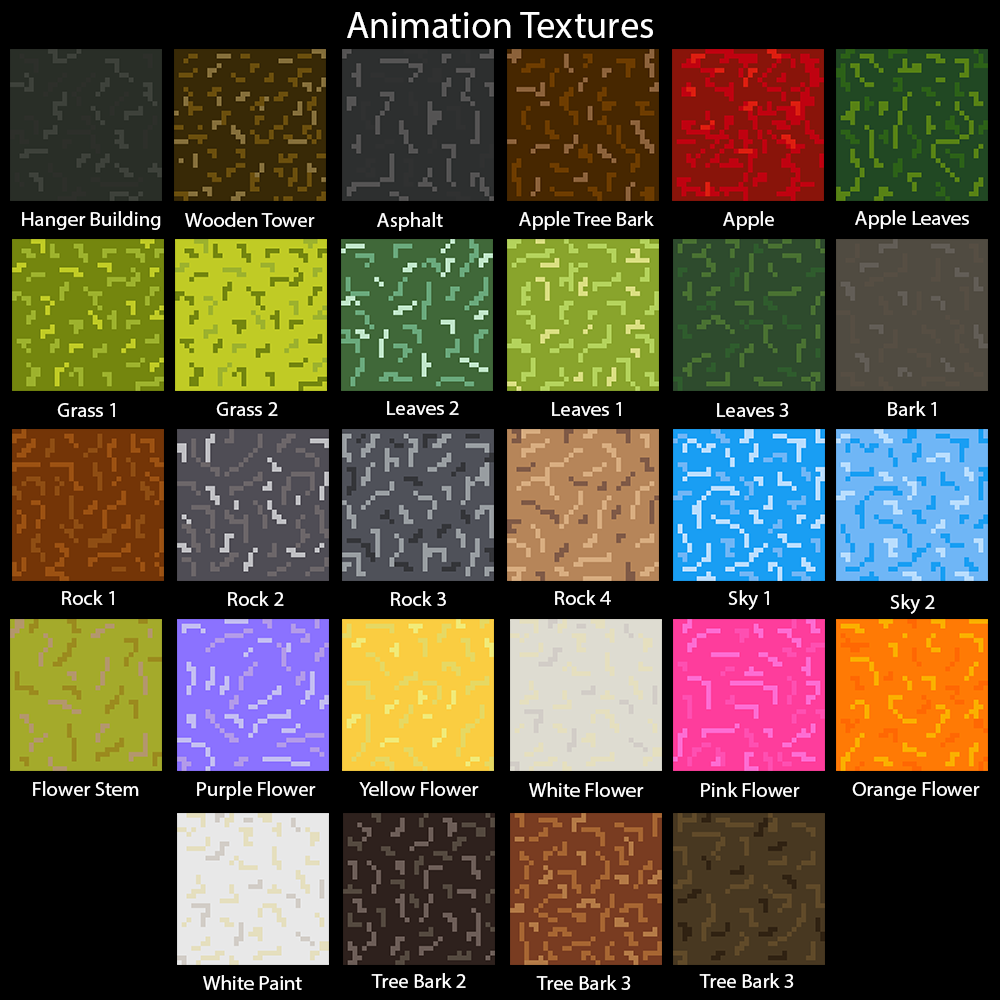Textures are a great way to view small multiples as they are all the same shape but what’s in them is always slightly different from each other this is a great example of “simultaneous two-dimensional indexing of the multiplied image, flatland within flatland” (Tufte 1990 P.78) each of these square textures is made from 32×32 pixels upscaled to 512×512 their simple cube shapes are easily distinguished from one another and will be very useful to give that simple look when it comes to making the animation.
Each texture is made from the natural colors that you would find them to be in real life however only 3 colors and shades are taken to create each texture the difference in color is apparent at a quick glance and even at a distance will be noticeable these textures are simple and more stylized for the animation.
Multiple textures were created for such things as Tree bark, Grass, Rock, and Leaves so there could be multiple types of trees and rocks as for the grass so there could be different shades of grass the textures were created using similar colors however they are not the exact same colors but in a different order, each one was hand-picked from nature.
Tufte, E., 1990. Envisioning information. Cheshire, Connecticut:Graphics.
- by mcfayden2020
- on January 24, 2022

